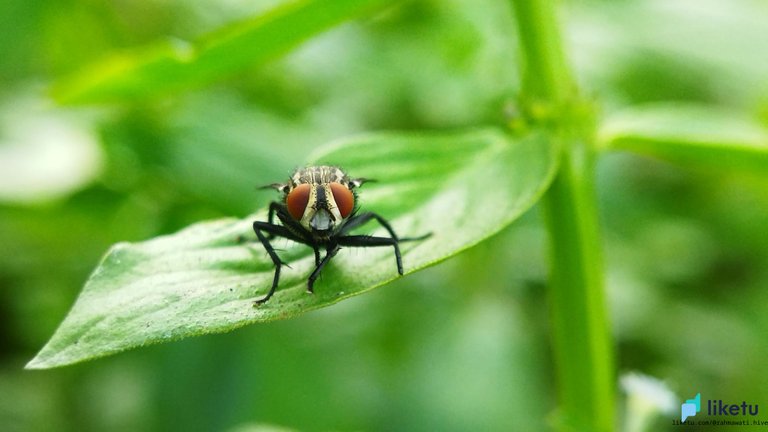
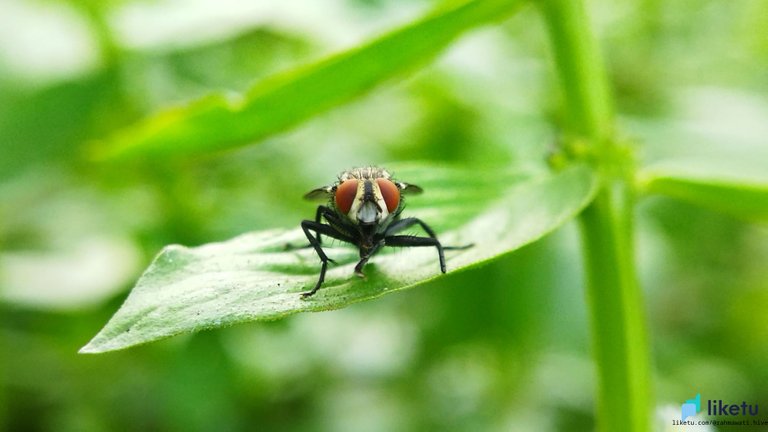
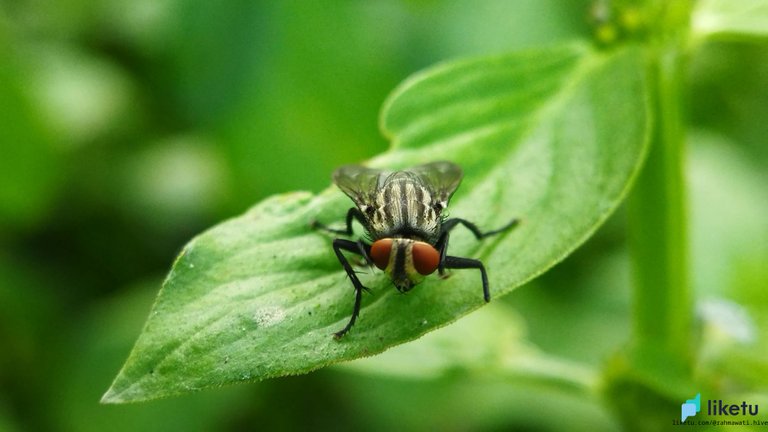
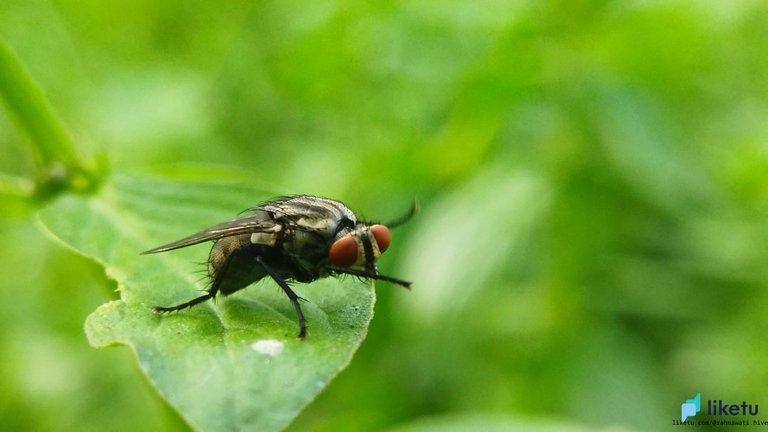
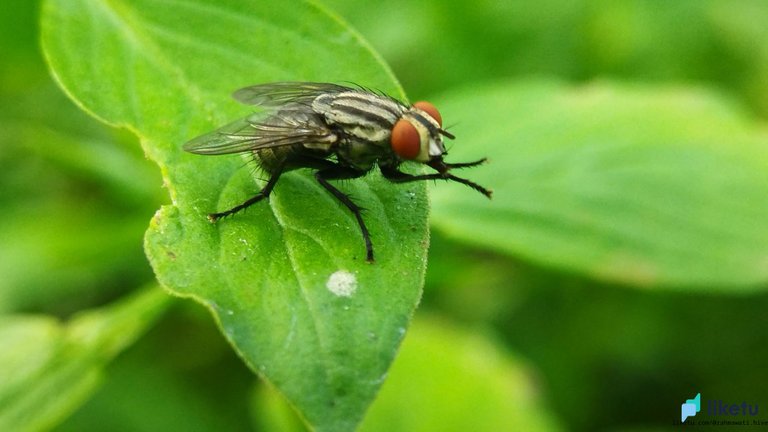
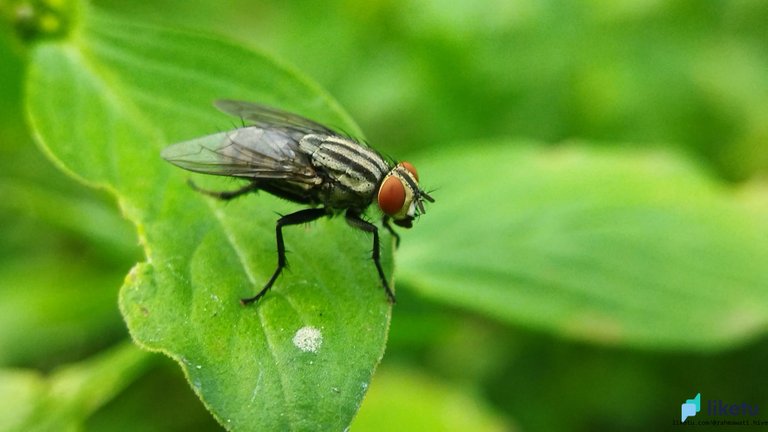
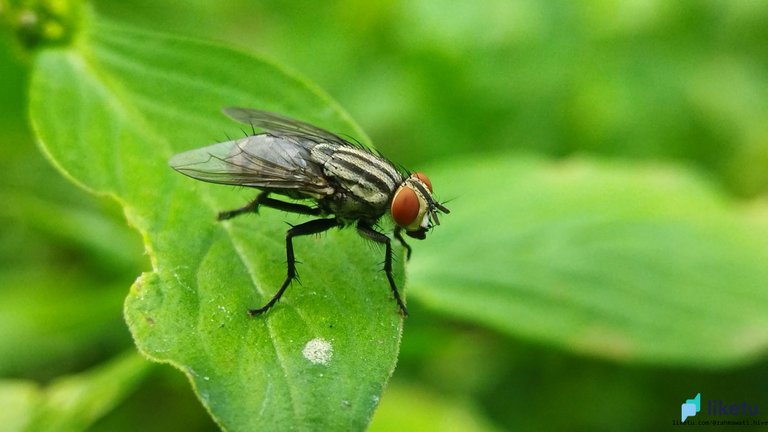
The house fly (Musca domestica) is a fly from the suborder Cyclorrhapha. The fly is believed to have evolved during the Cenozoic era, possibly in the Middle East, and to have spread throughout the world as a species that has a commensal relationship with humans. This species is the most common fly species found in homes. Adult flies are gray to black in color, with four dark stripes running down the thorax, a slightly hairy body, and a pair of membranous wings. House flies have red eyes that are further apart in females who are slightly larger.
Female flies usually mate only once and store sperm for later use. The female fly lays about 100 eggs on decaying organic matter such as food debris, carrion, or feces. The eggs soon hatch into white, legless larvae, known as maggots. After 2 to 5 days of development, the maggots metamorphose into reddish-brown pupae, about 8 mm long. Adult flies usually live for 2 to 4 weeks, but may hibernate during the winter. Adult flies feed on a variety of liquid or semi-liquid substances, as well as solids that have been softened by their saliva. House flies can carry pathogens in the body and their faeces, contaminate food, and contribute to the transfer of food-borne diseases, while, in large numbers, they can be physically irritating. For these reasons, house flies are considered pests.
Flies have been used in laboratories in aging research and sex determination. Flies appear in literature from Ancient Greek myth and The Impertinent Insect by Aesop and after. Writers have sometimes chosen flies to convey the brevity of life, as in William Blake's 1794 poem "The Fly," which deals with death subject to uncontrollable circumstances. wikipedia
For the best experience view this post on Liketu


